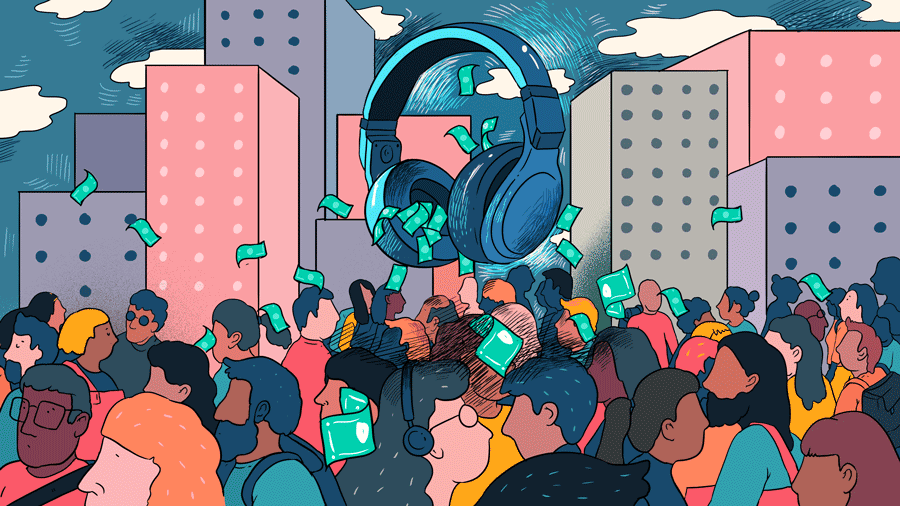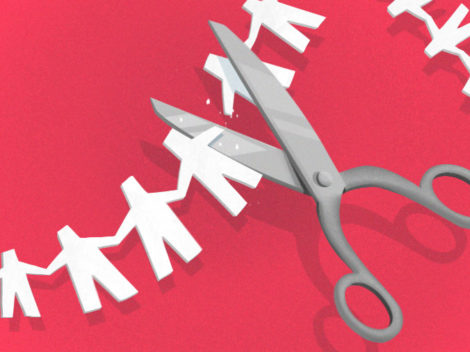At the start of its investor day, Spotify announced that it intends to begin public trading on April 3rd, or less than three weeks from today.
The music-powered firm is going public using a direct listing, a method of flotation that will not see the company sell new shares in its debut. As such, there’s no traditional underwriters or other such trappings.
It’s a slightly odd, probably risky plan. There is uncertainty in the market that the firm is taking a reasonable approach to going public — here’s an example — but Spotify has shrugged off the commentary and is moving ahead with its plan. Daniel Ek, CEO of Spotify, noted in his introductory remarks that the company was not focused on the “pomp and circumstance” of a normal IPO.
Regardless of how well the direct listing goes, the market will have a new data point regarding unicorn debuts.
Will Spotify’s direct listing drive more of the same form other, similarly valuable companies? Probably not, ironically, as most other unicorns aren’t free cashflow positive, and thus probably need their IPOs to be cash-accretive.
Let’s talk about how Spotify talks about itself.
Concerning Spotify
Central to Ek’s investor pitch today was the maturity and size of Spotify. After noting the company’s age — over 10 years — Ek disclosed the number of employees that Spotify currently employees: over 3,500. The goal of the speeech seemed to be to establish the company not as some sort of upstart, but instead the leading player in music streaming, a market category that Ek noted was driving growth in the music business after years of decline.
And, as the company’s F-1 is public, Spotify detailed a few non-GAAP metrics that are worth sharing. First, that the company has a hugely young userbase, with 72 percent of its monthly actives under the age of 35.
I suppose we can read that as Spotify showing that its product is connecting with people in their youth, which implies that its current customer acquisition work could yield long-term revenues from subscribers who continue listening to music for years.
(Thus bringing Spotify buckets of subscription dollars as they age, of course.) But, music is what Spotify has long done best, so how does it intend to keep its market position? A few ways. Let’s explore.
Free, Freedom, And Data
How will Spotify defend its subscriber base and keep growing in a crowded market? Condensing from brightly-colored slides and spoken paragraphs, Spotify thinks it can stay on top due to its freemium model, multi-platform strategy, and data creation and usage.
Briefly, the first point deals with Spotify’s free, ad-supported tier. It’s been controversial with some artists who worry about devaluation of their creation, famously with some band’s late entrance to the platform, and some artist’s deliberate hiatuses. However, Spotify noted that its free service creates a critical on-ramp for paying users (Variety has a good quote on the matter here).
Second, Spotify exists everywhere, regardless of where the user may be at any given moment. As I write to you, for example, I am running Spotify on a Macbook Pro, which is linked to my iPhone, which in turn is sending audio to a large, portable speaker. I use the Mac to send directions to the phone, which then plays on the speaker.
Now that’s not the most efficient setup, but it shows off what Spotify wants to do: be everywhere, and work well wherever it is. This is in obvious contrast to other companies, especially platform players, that have a focus on only their own ecosystems. But more on that in a minute.
Lastly, Spotify made noise about data, both for and from users and for artists themselves. Spotify’s massive user base creates huge stacks of data which power consumer features like playlists, and also help artists learn from their fan base. Here I have to mention that Spotify gave Metallica a shoutout, which was great. The band, it seems, can tailor set lists for concerts depending on which tracks are popular in the city they are playing in.
There is an implicit flywheel in the above. Free users help Spotify generate more data than it could with just paying users, allowing it to build a more intelligent service for both music fans and artists, thus creating a better service, enticing those same free users to become paying subscribers. And so forth.
Those Other Players
Before we simply point you back at Spotify’s F-1 with a directive to do your own research and not trust in a company’s self-hype, a little note on Spotify’s take on rival streaming providers.
First, recall who else is in the music business: Amazon, Google, Apple, Facebook (kinda), and not-really-anymore-Microsoft. Amazon has music for sale, and free streaming through Prime membership. Apple has both iTunes track sales and Apple Music streaming. Google has Google Play Music, not to mention all music ever (legal and not) on YouTube. Facebook has deals in place to do something with music. And Microsoft just shut down another attempt at Music (Groove is now dead. I still miss Zune.)
So, Spotify is swimming with the biggest fish in the sea. To that end, the company emphasized its multi-platform strategy and focus. Spotify doesn’t want to sell hardware or books, it joked, potshots at Apple and Amazon. It just wants to do music, and maybe other audio-related work.
And that brings us back to Spotify’s core pitch, really, that it does music best because it does music first. And it’s been doing music for a long time.
If that, combined with its deeply unprofitable operation, is enough to entice investors will be seen on April 3rd.
Top Image Credit: Li-Anne Dias

Stay up to date with recent funding rounds, acquisitions, and more with the Crunchbase Daily.



![Oct Calendar page being torn off to make way for Nov. [Dom Guman]](https://news.crunchbase.com/wp-content/uploads/oct-nov-470x352.jpg)

![Illustration of a man sitting on a huge pile o' money. [Dom Guzman]](https://news.crunchbase.com/wp-content/uploads/Giant_Funding-470x352.jpg)
![Illustration of a guy watering plants with a blocked hose - Global [Dom Guzman]](https://news.crunchbase.com/wp-content/uploads/quarterly-global-3-300x168.jpg)
67.1K Followers